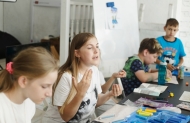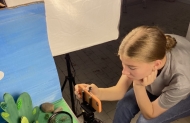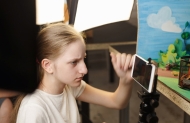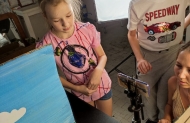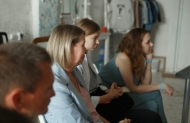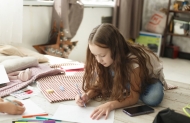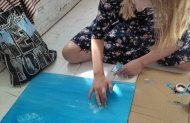
EURSIA KIDS take part in the International Festival of Family Media Creativity "Sunflower". The festival's partner, the School of Online Professions, a non-profit organization, teaches children how to create cartoons.
Children master several new professions at once: decorator, screenwriter, operator, lighting specialist, sound engineer, voice actor. And the most amazing thing is that the guys will be able to create a full-fledged cartoon using their phones.
July 12 to August 20 in Izhevsk (Udmurtia, Russia) there will be held daily creative classes for children 9 - 15 years old. The classes aim to explain the children, by including in the process that their gadgets are just tools for creating something useful, valuable and can broadcast social aspects adapted for their peers in their own language.
The process itself is structured as follows: first, the guys come up with stories for cartoons. It is based on ecological knowledge about how to properly dispose of garbage, what irrational consumption and disrespect for nature can lead to, as well as how the recycling process works in European countries, and what we can do now.
Then the guys will create cartoon characters - this is the next important stage in creating a cartoon. Plasticine, sand and improvised natural materials (cones, twigs, flowers, grass) are used.
The next stage is the longest and most laborious: shooting. To create a two-minute cartoon requires at least 6000 frames. Animation is frame-by-frame photography. Children are divided into three groups, each of which has its own story, characters and materials. The shooting takes place thanks to the equipment of the studio: tripods (which tightly fix the gadget, since there should not be even the slightest fluctuations), lighting equipment. The shooting itself is done through mobile devices in the free application for creating animations Stop Motion Studio.
Then comes the voice acting in the studio, if there is a voice according to the script, and then selected sounds and music are recorded through a microphone. After that comes editing (also through available free applications) and processing.
Nadezhda Shorkina



